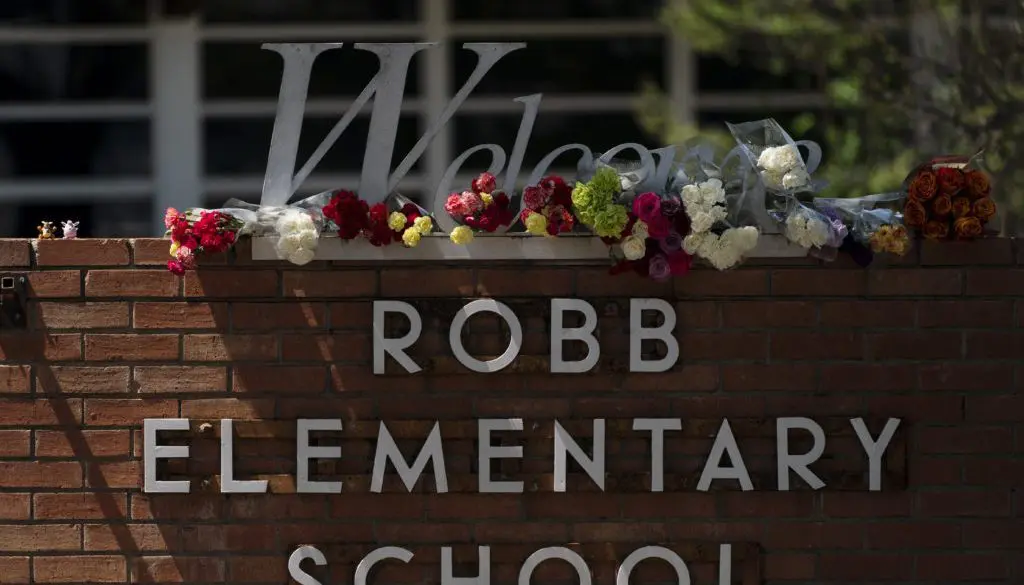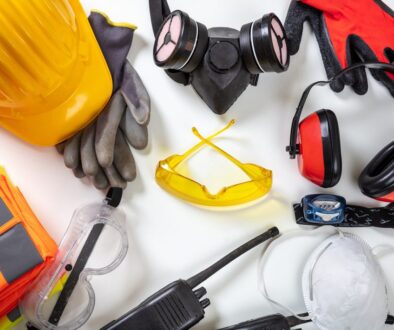La gestion efficace des incidents impliquant des tireurs actifs et d’autres événements importants nécessite une approche holistique avec des solutions de bout en bout.
Récemment, une commission d’enquête du Texas a publié son rapport préliminaire sur la fusillade de l’école d’Uvalde, au Texas, qui a fait 21 morts en mai.
Les solutions Rave Mobile Safety n’étant pas en place à l’école primaire Robb, je ne peux pas parler directement de l’incident ou de ce que les données de cette terrible journée révèlent. Je peux cependant vous dire que bon nombre des conclusions de la Chambre des représentants du Texas trouvent un écho chez moi, compte tenu de l’expérience que j’ai acquise au cours des 17 dernières années dans le domaine des technologies visant à prévenir et à atténuer l’impact de ce type d’événements.
Il n’existe pas de solution unique à tous les problèmes rencontrés à Uvalde, c’est pourquoi les communautés progressistes adoptent une approche pluridisciplinaire et écosystémique de la sécurité. De même, les écoles et les autres acteurs ne peuvent pas se contenter d’une seule méthode de communication. La messagerie, les communications et la collaboration multimodales doivent faire partie d’une solution globale de bout en bout. La sécurité des personnes nécessite une approche quotidienne et globale. Par conséquent, les technologies utilisées dans le cadre d’un plan de préparation aux situations d’urgence doivent être évaluées en fonction de leurs capacités, non seulement en cas d’urgence, mais aussi dans le cadre d’une utilisation quotidienne. Tout aussi importante est la capacité à s’engager et à interagir avec toutes les parties prenantes, y compris le 9-1-1 et les premiers intervenants.
Pour mieux se préparer aux incidents, les responsables de la sécurité des écoles peuvent mettre en œuvre diverses technologies pour gérer l’ensemble du cycle de vie des situations d’urgence, depuis la préparation et l’atténuation jusqu’à l’intervention et la récupération. Parmi les technologies clés, on peut citer
- Les applications de conseils anonymes/confidentiels recueillent des informations essentielles via une application mobile, un site web ou un texte pour aider à prévenir les situations d’urgence avant qu’elles ne se produisent. Des systèmes tels que FortifyFL en Floride se sont avérés extrêmement efficaces pour mettre en évidence les problèmes avant qu’ils ne constituent un risque pour l’ensemble de la communauté.
- Applications de boutons de panique qui avertissent instantanément les principales parties prenantes par le biais de plusieurs modes, tout en s’intégrant au centre local 9-1-1 pour accélérer la réponse. Des communautés de toutes tailles ont déployé avec succès cette technologie, y compris à l’échelle de l’État dans des endroits comme l’Oklahoma, le Nouveau-Mexique, la Louisiane et le Delaware.
- Des plateformes de partage d’incidents pour s’assurer que toutes les parties prenantes – y compris celles de l’école, de la sécurité publique et des autres organismes d’intervention – sont sur la même longueur d’onde lorsqu’il s’agit d’exécuter une intervention. Le partage d’informations pertinentes avec ces entités est important si l’on considère le nombre d’agences inter-juridictionnelles qui répondent à des événements de grande ampleur, comme ce fut le cas à Uvalde. La possibilité de partager et de faire remonter les détails de l’incident peut réduire considérablement les délais de réponse et permettre une meilleure coordination de la réponse, de manière transparente et automatique.
- Smart Proximity Alerts en collaboration avec le 9-1-1 et la sécurité publique locale afin d’avertir automatiquement les bonnes parties prenantes en cas d’urgences diverses. Plus important encore, les alertes de proximité intelligentes peuvent distinguer différents types d’urgences et transmettre les mises à jour aux parties prenantes qui ont besoin d’être informées, plutôt qu’à tout le monde, ce qui pourrait créer une lassitude à l’égard du message. En s’intégrant automatiquement à votre système local 9-1-1, ce processus peut être réalisé facilement et est très instructif.
Chez Rave, nous n’aurions tout simplement pas pu devenir le partenaire de confiance en matière de communication et de collaboration de plus de 8 000 clients dans le monde, de 10 000 écoles primaires et secondaires aux États-Unis et de plus de 75 % des étudiants de l’enseignement supérieur en Amérique du Nord sans poser des questions et chercher des réponses. Notre société a participé à des milliers d’activations de boutons de panique Rave au fil des ans, ce qui nous a permis d’acquérir une connaissance unique des processus et des stratégies qui entrent en jeu dans la sécurité des écoles et des communautés. À la lumière de ce récent rapport, nous avons voulu partager quelques bonnes pratiques pour aider à la planification de la sécurité et aux décisions technologiques :
Donner la priorité à la planification préalable
Aujourd’hui, les meilleures solutions de sécurité scolaire offrent un mécanisme de collecte et de partage des informations relatives au campus scolaire, telles que les cartes, les plans d’étage, les plans d’opérations d’urgence et les coordonnées des personnes à contacter. Dans le cadre du processus de planification préalable, assurez-vous que les solutions que vous choisissez peuvent s’intégrer au système 9-1-1 et aux autres organismes d’intervention. Par exemple, l’activation d’un bouton de panique devrait permettre d’appeler le 9-1-1, en plus de présenter automatiquement des informations sur l’appelant, l’emplacement et l’urgence en temps réel, chaque fois qu’un appel d’urgence provient de ce campus – qu’il provienne d’une ligne fixe, d’un appareil sans fil ou d’une application de bouton de panique. Les écoles devraient envisager des plateformes multimodales robustes avec des règles personnalisables pour l’escalade et l’envoi de messages via une application pour smartphone, un courriel, une fenêtre contextuelle sur le bureau ou un SMS afin de s’assurer que les messages importants sont bien reçus. Les technologies doivent également s’intégrer aux systèmes de contrôle d’accès, aux haut-parleurs et aux autres technologies d’un bâtiment ou d’un campus par le biais d’une approche normalisée telle que le protocole d’alerte commun (CAP).
Les avantages et les inconvénients de la familiarité
Lorsqu’une application n’est pas utilisée régulièrement, elle est reléguée au second plan. L’utilisation quotidienne d’une application de sécurité permet de mettre le personnel à l’aise, de réduire les erreurs d’utilisation et de déchiffrer différents messages en fonction de la gravité de la situation. Par exemple, Rave traite des milliers d' »événements » par an pour les écoles. D’après notre expérience, la grande majorité des utilisations sont de nature opérationnelle (pas de tireur actif ou de menace imminente) et des événements médicaux. Méfiez-vous des systèmes qui ont été conçus dans un seul but, comme celui de l' »assaillant actif ». En ne se formant qu’aux situations d’urgence les plus critiques, les utilisateurs ne disposeront pas de la mémoire musculaire intégrée et des tests quotidiens nécessaires pour s’assurer que la technologie et, plus important encore, le plan de sécurité de l’école, fonctionnent comme prévu.
Il est important de noter que les exercices vont de pair avec l’utilisation quotidienne. Il ne suffit pas de mettre la technologie en place et d’espérer que tout ira bien. Chaque cas d’utilisation est unique, c’est pourquoi chaque scénario justifie un exercice spécialisé, de bout en bout, auquel participent le personnel sur place, le service 9-1-1, la sécurité publique, les organismes d’intervention et d’autres décideurs clés. Les solutions de sécurité transparentes doivent faciliter l’exécution régulière d’exercices et la production de rapports sur les résultats.
L’intégration de la technologie de sécurité dans les protocoles quotidiens permettra également aux écoles d’être informées de tout problème de disponibilité du réseau bien avant qu’une situation d’urgence ne se produise. Si votre couverture Wi-Fi n’est pas cohérente et complète, il peut être possible d’utiliser des solutions telles que FirstNet, qui est disponible pour tous les enseignants et propose généralement un plan de données à prix réduit qui donne la priorité au trafic.
La familiarité peut parfois conduire à l’apathie, comme ce fut le cas à Uvalde. Dans les mois qui ont précédé la fusillade, il y a eu 50 renflouements de trafiquants d’êtres humains près de l’école. Les renflouements se produisent lorsque les trafiquants d’êtres humains écrasent leur voiture afin que les occupants puissent fuir les autorités dans des directions différentes. Lorsque ces incidents de sauvetage se sont produits, les écoles ont été placées en quarantaine, ce qui a créé une « baisse du sens de la vigilance ». Selon le rapport d’Uvalde, « en réponse à l’alerte de verrouillage du 24 mai 2022 à l’école primaire Robb, la première réaction de nombreux administrateurs, enseignants et forces de l’ordre a été de penser qu’il s’agissait probablement d’un renflouement moins dangereux ».
Il est important de choisir une technologie capable de différencier les types d’urgence et de fournir des notifications appropriées à des personnes spécifiques en fonction de l’incident et du lieu, afin d’atténuer ce type de lassitude des utilisateurs. Par exemple, une opération de sauvetage n’aurait pas nécessairement besoin d’être diffusée dans toute l’école, mais seulement à certains membres du personnel de l’établissement concerné. En cas d’urgence médicale, seuls l’infirmière de l’école, le secrétariat et certains membres du personnel qualifié peuvent être prévenus.
Faites tout ce que vous pouvez aujourd’hui®
Souvent, les premières indications de quelque chose d’anormal peuvent se produire en dehors de l’enceinte de l’école, déclenchant des appels au 9-1-1 qui peuvent sembler sans rapport. Comme nous l’avons vu à Uvalde, l’auteur de l’attentat a franchi un certain nombre d’étapes au cours de sa folie meurtrière.
Pour se défendre contre les intrus indésirables, les écoles et les organismes de sécurité publique doivent continuer à collaborer et à partager en temps réel les informations relatives aux incidents critiques. Le partage des incidents en temps réel permet au 9-1-1 de diffuser automatiquement des alertes de proximité, ce qui permet de gagner le temps nécessaire pour sécuriser les lieux et mettre en place des protocoles de sécurité. Cette réponse peut être basée sur des règles établies à l’avance par l’école et les responsables locaux de la sécurité publique. Au milieu du chaos, les notifications et les flux de travail peuvent être déclenchés automatiquement en temps réel, ce qui permet de gagner des moments précieux et de réduire les étapes opérationnelles nécessaires en cas d’urgence.
Aussi déchirante que soit la fusillade de l’école d’Uvalde et aussi préoccupantes que soient les conclusions de l’enquête, il y a d’importantes leçons à tirer de cette petite ville frontalière. Les praticiens de la sécurité dans tout le pays ont la possibilité, dès maintenant, de changer les résultats futurs dans leurs écoles et autres lieux, mais seulement s’ils donnent la priorité à des pratiques de sécurité proactives et holistiques.




